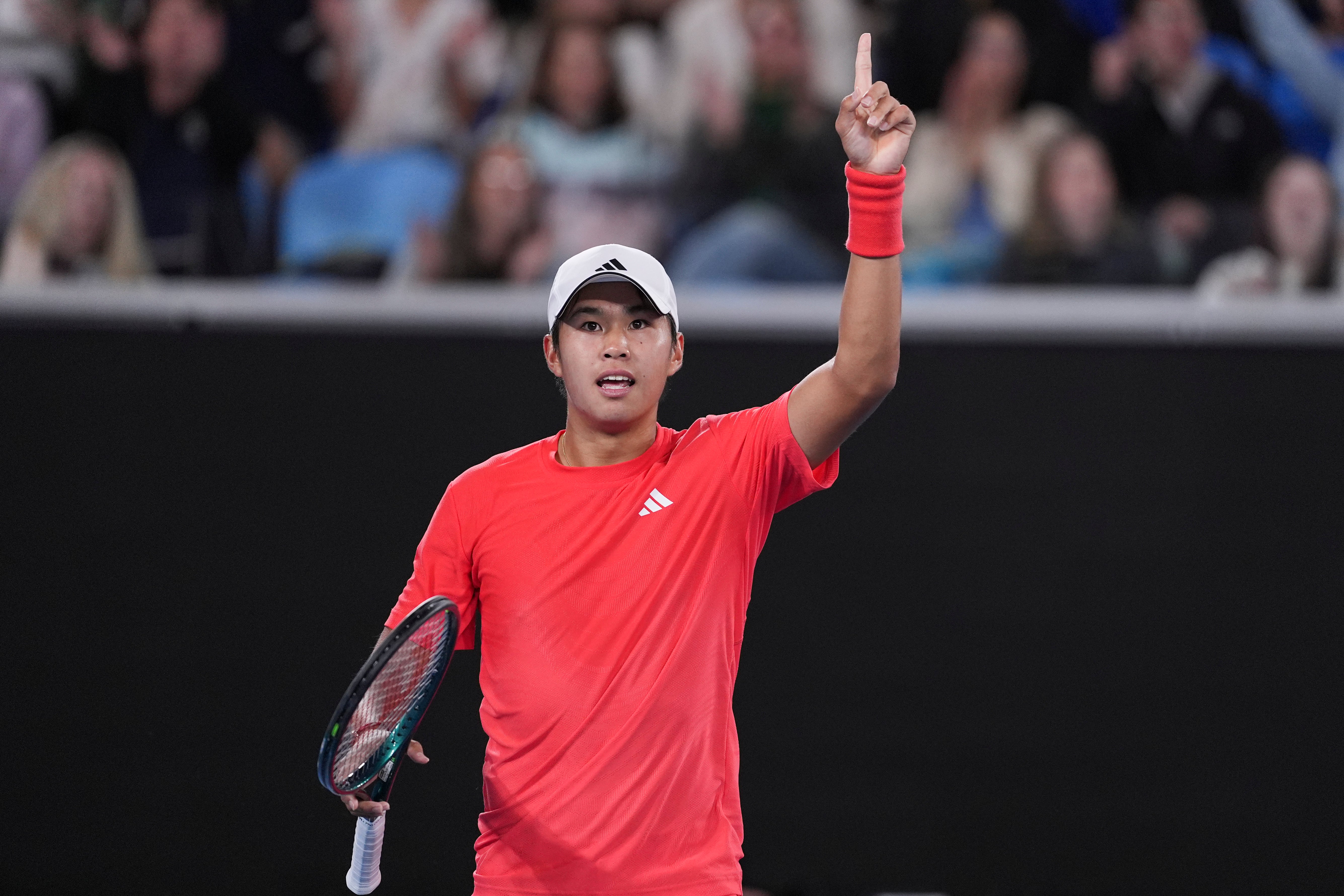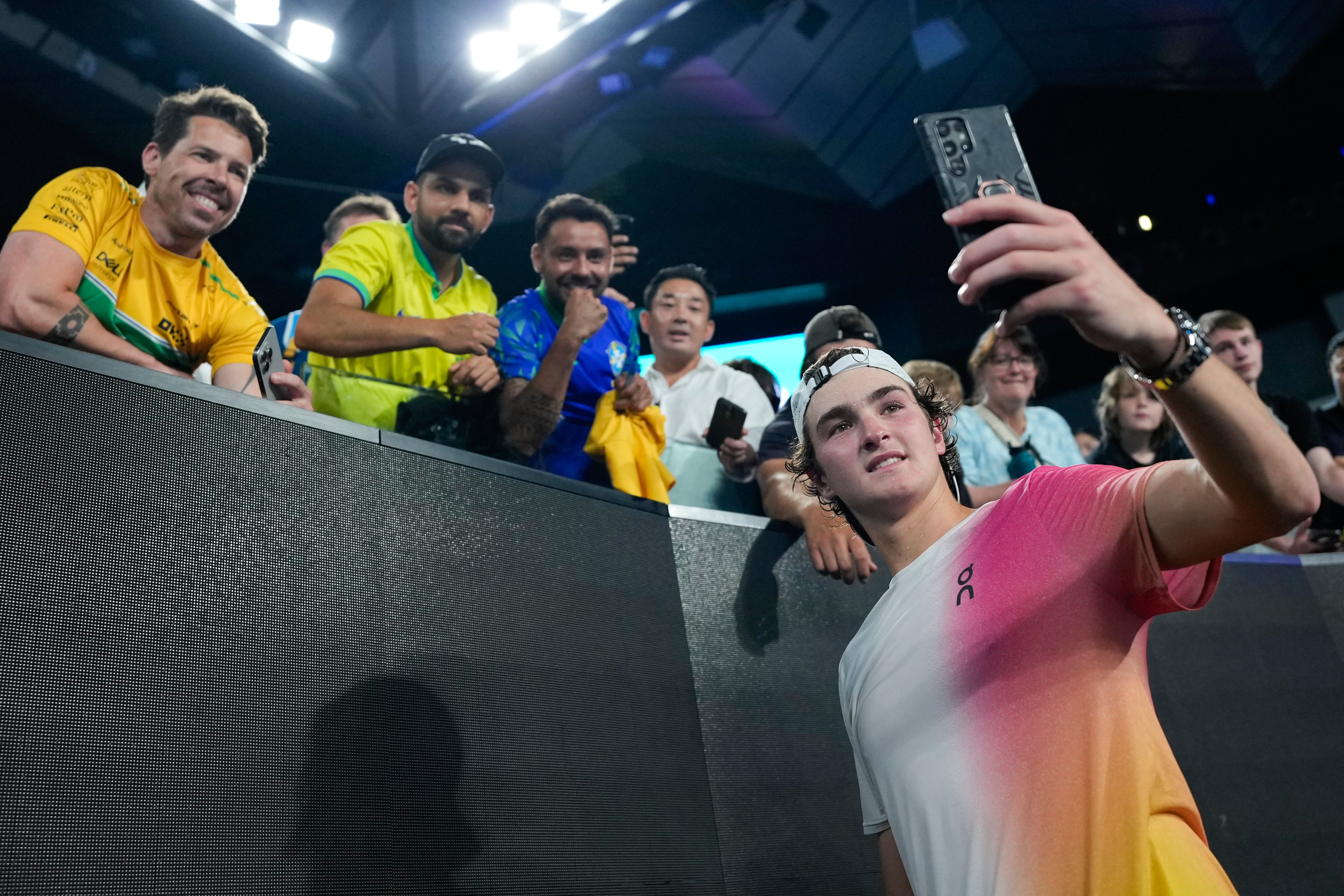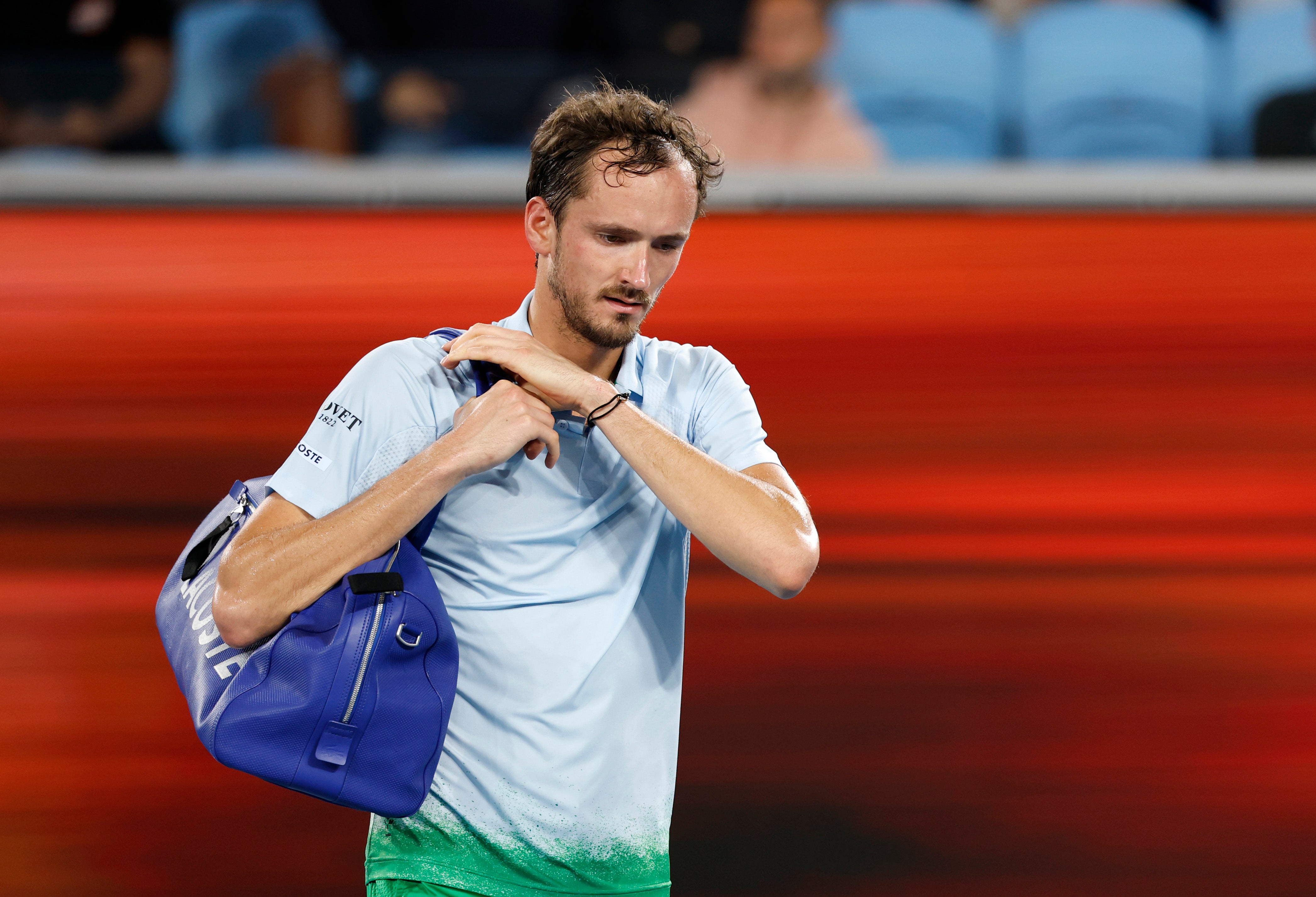Your support helps us to tell the story
From reproductive rights to climate change to Big Tech, The Independent is on the ground when the story is developing. Whether it’s investigating the financials of Elon Musk’s pro-Trump PAC or producing our latest documentary, ‘The A Word’, which shines a light on the American women fighting for reproductive rights, we know how important it is to parse out the facts from the messaging.
At such a critical moment in US history, we need reporters on the ground. Your donation allows us to keep sending journalists to speak to both sides of the story.
The Independent is trusted by Americans across the entire political spectrum. And unlike many other quality news outlets, we choose not to lock Americans out of our reporting and analysis with paywalls. We believe quality journalism should be available to everyone, paid for by those who can afford it.
Your support makes all the difference.
Stefanos Tsitsipas remembered a different time. “I had a fresher mind back then, it seemed like I was hungrier,” Tsitsipas began, as he seemed to contemplate his career, his life, and everything in between. “I’ve been quite well established in the last couple of years,” he continued. “I have seen the game. I’ve done the tour over and over again, the same circle of tournaments and events.”
At the age of 26, Tsitsipas sounded as if he had suddenly woken up to find himself in a midlife crisis. In reality, the world No 12 and two-time grand slam finalist had just lost in the opening round of the Australian Open, suffering a shock defeat to the 20-year-old American Alex Michelsen. It was also the second grand slam in a row where the Greek had lost in the first round.
Except, that didn’t seem to be the reason for his dejection. In his press conference after the defeat, Tsitsipas made some peculiar statements. Among them, he said he is a “better player” now than when he reached World No 3 in the rankings four years ago. Or when he was beating Roger Federer in the Australian Open fourth round at the age of 20. In any case, his recent results would disagree.
Rather, Tsitsipas was hit with the realisation that a new generation might have caught up with him. Across the net, Michelsen was now the up-and-coming 20-year-old, thriving on the big stage to take out the higher-ranked opponent.
Elsewhere at the Australian Open, the shocks have continued, with the 18-year-old Brazilian sensation Joao Fonseca taking out ninth seed Andrey Rublev on his grand slam debut and the 19-year-old Czech Jakub Mensik defeating sixth seed Casper Ruud.
Sensationally, the biggest upset came as 19-year-old qualifier Learner Tien defeated three-time Australian Open finalist and fifth seed Daniil Medvedev, winning a fifth set tiebreak at 3am on Thursday in the match of the tournament so far. The American had seen the results achieved by the other teenagers in the draw this week and wanted his own.
“I think it was definitely pretty inspiring,” Tien said in between slices of pizza. “They obviously got those wins before I played my match today, I was just trying to almost join them. I think just seeing them, the wins they’ve had this week, just adds a little bit more belief that it’s possible.”

The next generation have arrived, and spectacularly. Tien, Fonseca, Michelsen, Mensik and 19-year-old wildcard Nishesh Basavareddy, who was described as the “complete player” by Novak Djokovic in his defeat to the 24-time grand slam winner, have all shone at the Australian Open after appearing in the ATP’s NextGen Finals in December. That tournament, which features the eight best players under 21, has provided the springboard for the sport’s young talents to follow in the footsteps of Jannik Sinner and Carlos Alcaraz.
“They were teenagers a few years ago,” said Mensik, following his victory over the three-time grand slam finalist Ruud. “We can approach the same and go by their steps and try to reach the same level, compete against them.”
Despite the pressure, it is perhaps natural for a teenager to rise to the occasion and find inspiration when having nothing to lose in the biggest match of their life. But from Michelsen to Fonseca and now Mensik and Tien, there has also been a confidence about it, which goes beyond the “hunger” that Tsitsipas felt he was missing.
“I want more and more,” Fonseca smiled after beating Rublev. “Yeah, more and more. I think that’s the mentality of a champion.”

“It’s great that there is new blood, always,” said Mensik. “We can see that tennis is moving on. We can see different or new names at tournaments. For the fans, for tennis, for everything, it’s really great. The new blood is coming.”
But while some feel that their time is now, others fear that theirs is starting to run out. The Australian Open has been a magical tournament for those born after the millennium but is turning into a nightmare for any player born in the 1990s.
It reflects a wider theme. As a result of the era-defining dominance of Djokovic, Federer and Rafael Nadal, male players born in the 1980s have won a combined total of 80 grand slam titles. The emergence of Alcaraz and Sinner means that players born in the first decade of the 2000s already have six, with the Spaniard and the Italian splitting the grand slam titles between them in 2024.
By contrast, just two male players born in the 1990s have made the step to become grand slam champions: Medvedev and Dominic Thiem. Sadly, it rather adds to the stunning failure of the 90s tennis kids that Thiem, the US Open champion in 2020, has already retired from tennis at the age of 31 due to a chronic wrist injury. Between them, what was once the “next generation” of Medvedev, Alexander Zverev, Ruud, Rublev and Tsitsipas have so far combined for a single grand slam title.

In fairness, the 90s generation would have won many more titles were it not for Djokovic, Federer and Nadal, who combined for an astonishing 66 of the grand slams won by male players born in the 80s. Some of those born at the start of the 90s, whose entire careers passed by with Djokovic, Federer and Nadal at the top, didn’t even stand a chance of reaching a grand slam final ahead of the other three.
But what the “Big Three” left behind for those who are slightly younger was a trail of destruction that continues to hang over them as they now enter the second part of their careers in their mid-20s. An impact of Djokovic, Federer and Nadal suppressing their younger opponents for so long is that, in the case of Tsitsipas, many are now looking beaten and crushed, or even just exhausted from the sport, at the stage where they should be entering their prime years.
At the same time, Sinner and Alcaraz have stepped out onto the scene while being unencumbered by such scars. The young rivals also arrived at a point where Djokovic, the main oppressor of the late-90s generation, began to fade physically, while playing the same style of hard-hitting baseline tennis that the Serbian mastered to keep himself at the top.
That approach is now being seen throughout the fearless young players who are coming through. Sinner and Alcaraz have brought an evolution, which made Tsitsipas question if he is even playing the same sport. “When I came around in 2018, the game was very different to what it is now, it wasn’t as physical,” he said after the his loss to Michelsen.
Tennis has always been physical but Tsitsipas was not wrong; at the Australian Open the game is appearing to change before our eyes.


